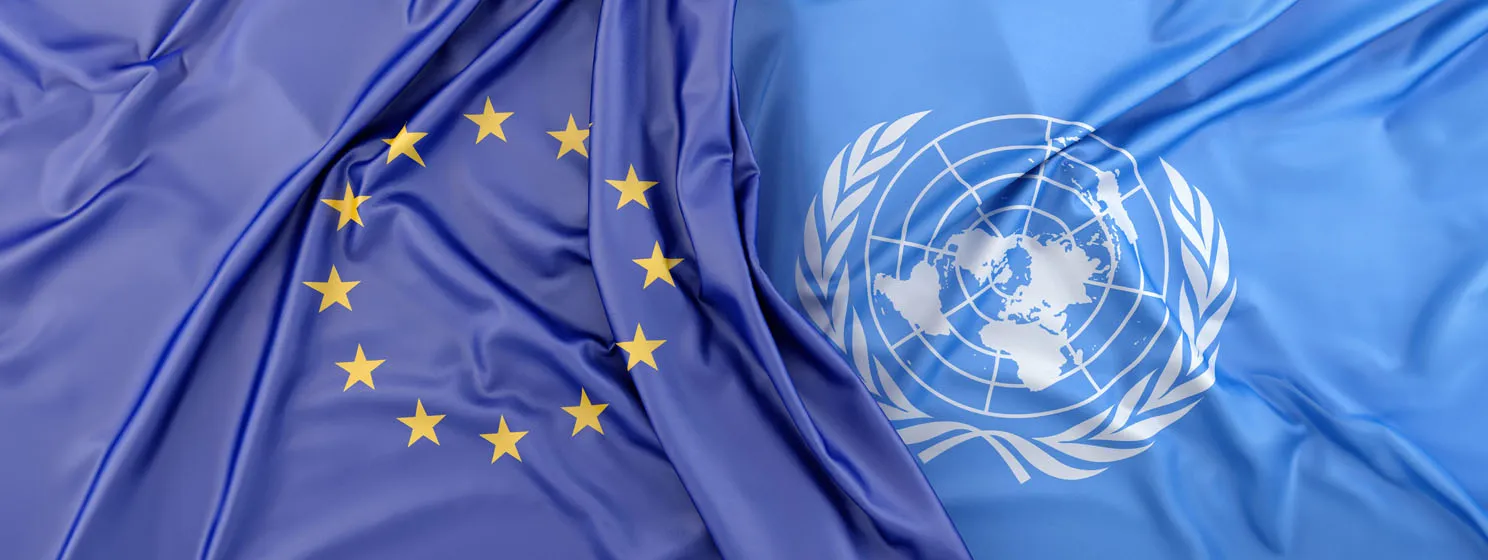|
Getting your Trinity Audio player ready...
|
Web3 and the Internet of Value (IoV) are two terms anyone working close to the blockchain and digital currency industries will undoubtedly hear. They became buzzwords in the last speculative bull run, conjuring up images of a futuristic internet powered by virtual reality (VR), artificial intelligence (AI), and decentralized networks.
While many of the ideas about Web3 and IoV are little more than hype and marketing gimmicks, the concepts themselves are real, and this loosely connected mixture of ideas will revolutionize how the internet works forever.
So, what is Web3? What is the IoV? What problems will they solve? And what role will massively scalable public blockchains play in all of this? Let’s begin with a quick history of the internet to bring us up to speed.
Web1, Web2, and Web3—a brief history of the internet
Web1 is the first iteration of the internet. It’s sometimes described as the ‘read only’ internet. In this era, small groups of people created basic websites with useful information the public could read and browse through early web browsers like Netscape Navigator.
In the Web1 era, the basic infrastructure of the internet was built, the very earliest e-commerce stores popped up, and the first tools geared at allowing people to access information were built. In those days, most people thought the internet would be something like the digital yellow pages with email as an add-on.
Then came Web2. This didn’t happen overnight. It wasn’t like somebody flipped a switch, and we all of a suddenly ended up on a more sophisticated internet. It was a slow, steady, but relentless evolution.
On Web2, users could both read and write. Millions of blogs popped up online, social networks took off, and eventually, apps became a thing as mobile access to the internet gained popularity. User experience improved significantly, but the user became the product as massive corporations like Facebook (NASDAQ: META), Twitter, and Google (NASDAQ: GOOGL) came to own the networks, harvesting user data and monetizing it for a profit.
Web2 is where we were just a few short years ago before Web3 started to develop. We’re still very much in the era of Web2, but things are changing as blockchain technology, digital currencies, AI, and other next-generation technologies develop rapidly.
While Web3 has yet to become a reality at scale, we’re seeing the first applications in this new internet take shape. This version of the internet promises to be peer-to-peer, cutting out the intermediaries and ending their ability to censor debate and free conversation. It will also allow users to own their data as they write to a globally available scalable public blockchain, ending the data harvesting that has come to characterize Web2. Web3 will be fueled by micropayments, making the user the client rather than the product.
Currently, we’re on the cusp of Web3, but we’re not quite there yet. Web2 is dying, and people are fed up with it and recognize the many ills it has visited on society. It’s going to take some time before we can fully adopt Web3, but in the next decade of the internet, there’s great optimism and hope that we’ll get there.
What problems does Web3 solve for enterprises and governments? What role do blockchains play?
Web3 is often described as the read + write + own iteration of the internet. Users, including businesses and governments, will truly own the data they write to the public blockchain underpinning Web3. Unlike in Web2, where everything anyone uploads to Facebook or Twitter is owned by the corporation that owns the database, in this era, the database will be public, and the data owner will remain the person who created it.
Web3 and the infinitely scalable blockchain(s) that underpin it will solve several problems for enterprises, governments, and users.
Data sovereignty
First on the list is data sovereignty. It’s no secret that data harvesting is baked into the nature of Web2, and the giant monopolies that run the services we depend on like that setup just fine. We are considered the product in Web2.
However, in the Web3 era, companies, governments, and individuals who create and upload data to the blockchain will own it forever and be able to monetize it, too. Not to mention, we will become the customer and no longer be considered the product.
With data sovereignty, several problems are solved, and many new opportunities are created. Privacy is restored since the snoops that harvest the data are sidelined or eliminated altogether. Large-scale data breaches will become rare as there will be few centralized databases to attack. Users, including businesses and enterprises, will be able to lease their own data for revenue if and when it suits them rather than giving it away for free.
Many still can’t grasp how an internet with true data sovereignty could even work because we’ve never known it could exist in the first place. With blockchain-powered Web3, it does and we will.
Transparency and traceability
Contrary to the claims of some of the anarchists and misguided early adopters of blockchain-based digital currencies, Web3 will be the opposite of the ‘decentralized’ lawless world they envision. In fact, being underpinned by a massively scalable public blockchain like Bitcoin SV (BSV), a record of every transaction, whether it to a payment or a communication, will be visible on the public ledger.
Wait a minute! Did I just say every communication and payment would be visible on the blockchain in Web3? No, I didn’t. I said a record of every transaction would be visible; that’s a huge and important difference. While payments, communications, and the data shared will be absolutely private, a record that such transactions occurred will be timestamped on the blockchain immutably.
This solves several problems for governments and enterprises. Theft and corruption will be much more easily detectable and thus disincentivized. Stolen assets will be recoverable. It will be possible to locate any file or record quickly, and decrypting it will be simple and hassle-free with the correct private keys.
In this blockchain-powered world, it will be possible to have a broad overview of what is going on within an organization, including things like current financial positions or who uploaded or accessed a record and when they accessed it in real-time. All of this will completely change the nature of enterprises and government organizations, making them more transparent and accountable.
Whereas Web2 was an era of trying to pull together pieces of a puzzle from fragmented databases, figuring out when a data breach occurred or where funds were moved to and by whom, all of this will be knowable within minutes on a blockchain-powered Web3.
Peer-to-peer exchanges
One of the things that characterize Web2, or it could be argued THE thing that distinguishes it, is large corporations and so-called trusted third parties in the middle of everything.
Think about it; all your emails run through servers owned by Google, Microsoft (NASDAQ: MSFT), or Yahoo. Your private chats go through servers controlled by Meta, Twitter, or Snapchat. Your most intimate moments, the photos and videos that make up your life, sit on servers owned by companies that view them as commodities to be exploited. Every payment must be cleared by a bank or payment processor.
While there’s nothing wrong with businesses making money, there’s something soulless about this form of surveillance capitalism. In fact, it can scarcely be called capitalism at all because the monopolies that run these systems smother competition and kill competitors in their infancy.
In the Web3 world, peer-to-peer exchanges will become the norm. Thanks to micropayments on blockchains like Bitcoin SV, it will be possible to pay nodes to process data in messages and emails that move directly from the senders’ devices to the receivers. With IPv6, an endless numbers of IP addresses will become available, making it possible to connect all of an organization’s devices, allowing all members, be they employees or agents, to communicate securely and privately over encrypted peer to peer networks.
Of course, the applications to facilitate these peer-to-peer exchanges still need to be built. While there are early iterations already out there, there’s no denying that Web3 as yet lacks the slick user interfaces and experiences Web2 offers. There’s a chance for forward-thinking companies to capitalize on this opportunity and build the apps of the future that will power these peer-to-peer exchanges, be they payments or emails.
As Web3 takes over, the giant companies we have come to depend on will become less and less relevant over time. Rather than resting on their monopolies over communications and social networks, they’ll have to innovate, create apps people want to use, and most importantly actually compete once again in the marketplace on an open protocol. This will usher in a free market once again, giving every business a fair chance to compete on a level playing field and fostering a new era of innovation and opportunity.
Web3 is radically different from what we know today
Web3 and the IoV will be so different from the internet we know today that they can scarcely be considered the same. For all of the benefits to be realized, a massively scalable, public blockchain will need to play a role.
These types of public blockchains are the central topic at the London Blockchain Conference, which will take place between May 31 and June 2, and anyone with ideas, products, or businesses that utilize public blockchains is welcome.
Of course, being focused on legitimate uses by enterprises and government, those promoting illegal securities will not be welcome to attend, but if you have an idea or a product/service that utilizes blockchain technology legally and legitimately, we want to hear from you.
Visit the London Blockchain Conference website to secure tickets or register as a speaker today. We hope to see you there!
Watch: Web3 and BSV Blockchain

 07-02-2025
07-02-2025 





